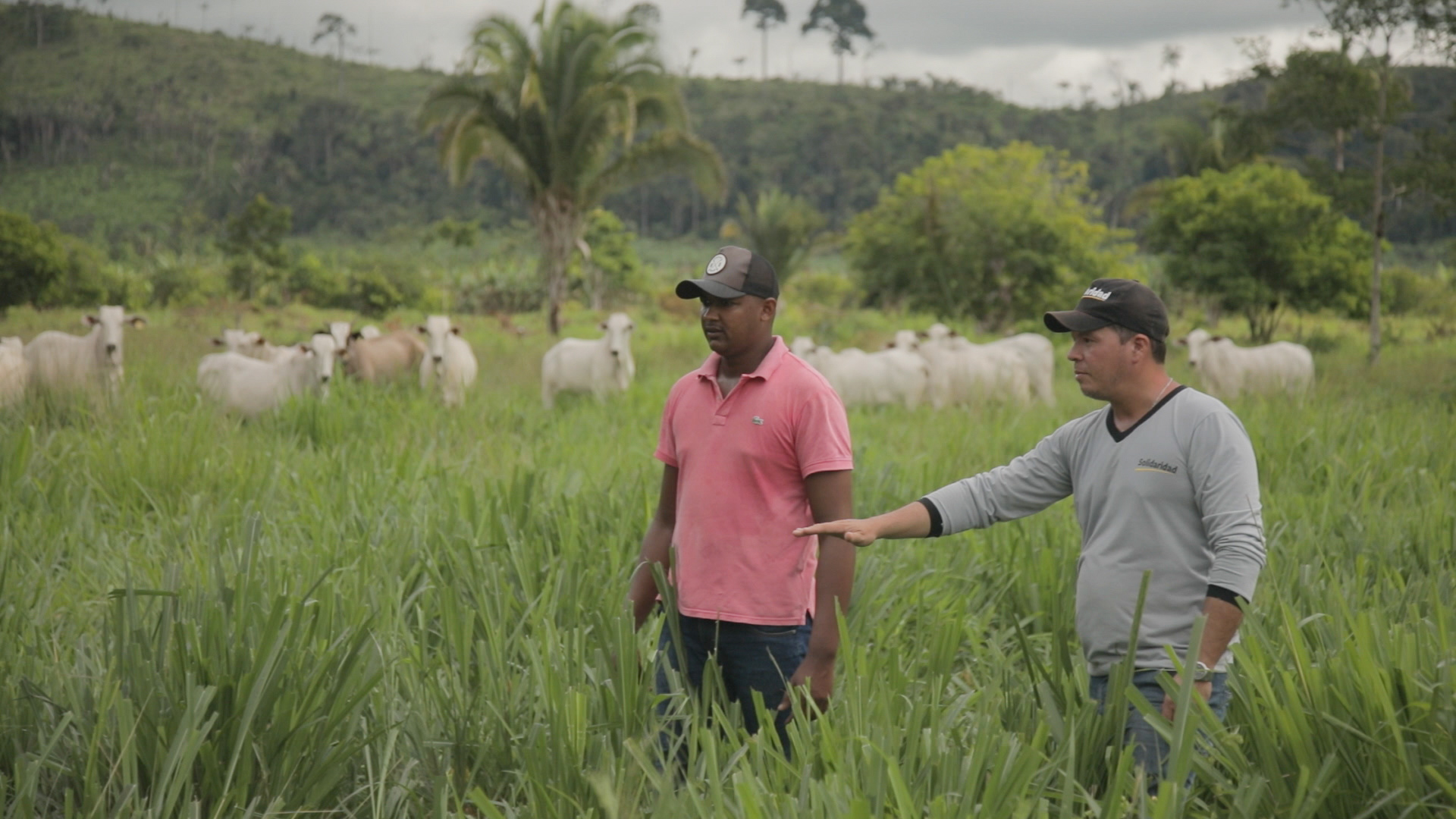Recent projections suggest that agricultural production will need to increase by 70 percent by 2050 to meet the growing global demand for food. At the same time, the agriculture sector is highly vulnerable to climate change and is one of the most significant contributors to greenhouse gas (GHG) emissions, particularly in low- and middle-income countries. Around 31 percent of anthropogenic GHG emissions globally come from the world’s agri-food systems, including on-farm emissions, land use change, and pre- and post-production processes.
Developing more sustainable agricultural systems that meet this growing demand for food while limiting GHG emissions will be essential to effectively addressing climate change. Various approaches to low-carbon agriculture, such as agroforestry, have emerged in recent years. These techniques have the potential to keep carbon in the ground while simultaneously increasing agricultural production and improving farmer livelihoods.
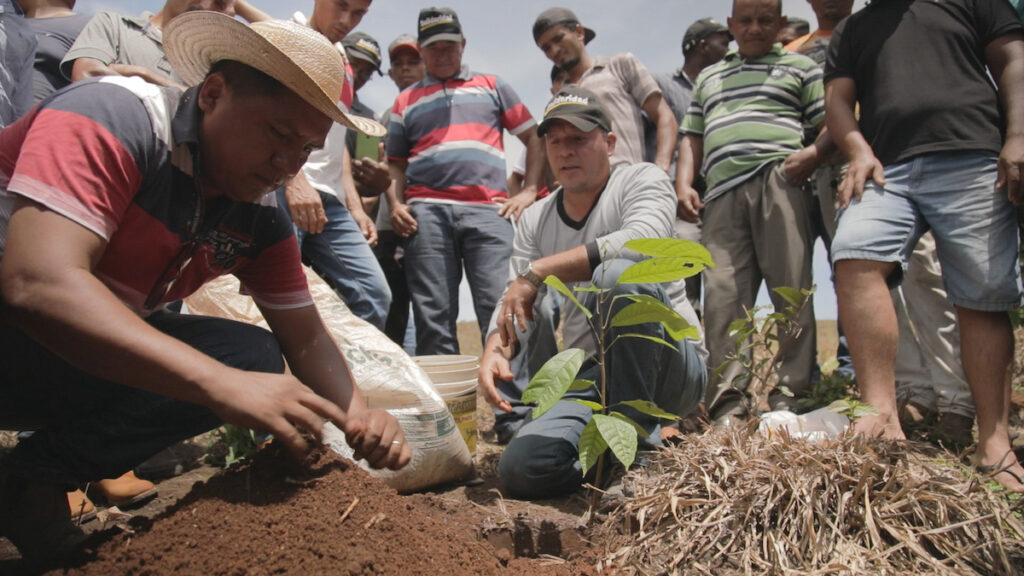
What is low-carbon agriculture & why is it important?
Low-carbon agriculture (LCA) is an approach that helps to transform and reorient agricultural systems to effectively support development and ensure food security in a changing climate. Solidaridad defines LCA based on the Food and Agriculture Organization’s definition of climate-smart agriculture.
LCA aims to tackle three main objectives:
- Sustainably increase agricultural productivity and farmer incomes;
- Adapt and build resilience to climate change;
- Reduce and remove GHG emissions (e.g., from agriculture and land use change and by enhancing soil carbon sequestration).
Although LCA practices are not standardized across all geographies, there are several common practices farmers are likely to implement, such as:
- Intercropping – growing two or more crops in the same field at the same time
- Crop rotation – growing a different crop in the same field each planting cycle
- Contour farming – growing crops along the contours of a hill’s slope, as opposed to farming up and down a hillside
- Rotational grazing – cycling animals through different grazing areas, which sequesters carbon in the soil and allows pasture to regrow and
- No- or low-till agriculture – a cultivation technique whereby the soil is minimally disturbed during planting, and plant residue is left on the soil surface
These practices have a variety of benefits, including increased yields, improved climate resilience, reduced on-farm GHG emissions, increased carbon sequestration, and improved farmer incomes. For example, in parts of Brazil, cocoa is intercropped with bananas, medium and large shade trees native to the Amazon, and annual crops such as cassava. Bananas and cassava can provide additional income or improve household food security, while native trees provide shade for animals and crops.
Other practices, such as crop rotation, yield additional benefits, including improved soil structure, increased soil nutrient content, and the natural management of pests and plant diseases. Contour farming reduces erosion, particularly during heavy rainfall or severe weather events. No-till agriculture simultaneously increases the amount of carbon sequestered in soil and reduces erosion.
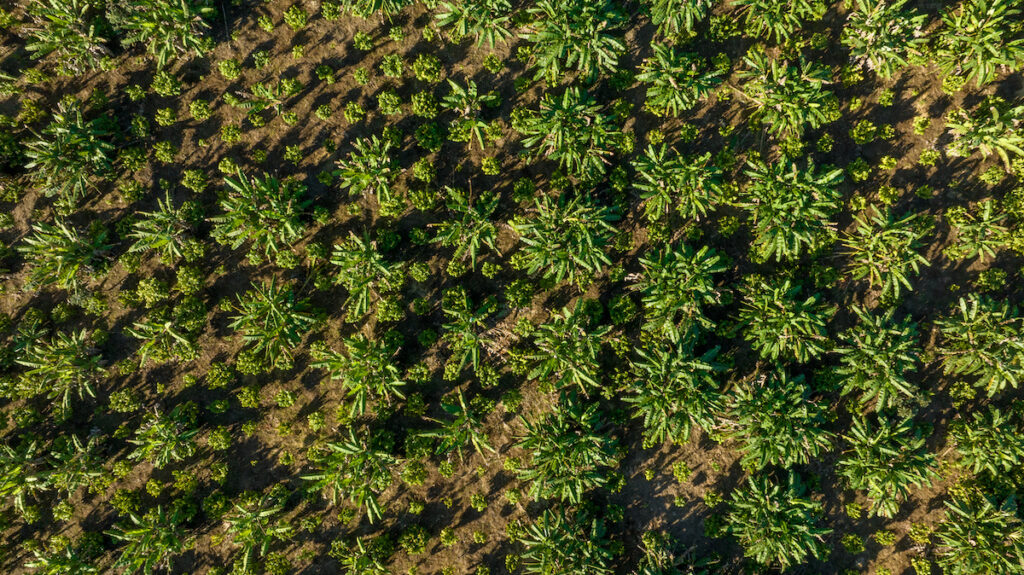
What is agroforestry?
Agroforestry refers to a range of land-use systems whereby trees and shrubs are intentionally integrated with agricultural crops and/or animals to create economic, social, and environmental benefits. Smallholder farmers often employ agroforestry techniques to improve food security, incomes, and health outcomes. Similar to low-carbon practices, agroforestry systems are known for improving water quality, nurturing soil, along with other benefits. Agroforestry practices also protect crops from extreme weather events, and provide farmers with additional products, such as fruits and vegetables, that can generate extra income.
Agroforestry is particularly well suited to crops such as coffee and cocoa, which grow well under the shade of other trees. In Brazil, Colombia, Nicaragua and Peru, Solidaridad is supporting small-scale coffee and cocoa growers to switch to agroforestry production models and reduce their carbon footprint.
In addition to the clear benefits of these practices, farmers can sell sequestered carbon emissions for additional income on international carbon markets, like Rabobank’s ACORN platform. As the effects of climate change become more pronounced, agroforestry systems will play an essential role in increasing smallholder farmers’ resilience to climate threats across many geographies.
Low-carbon agriculture in action
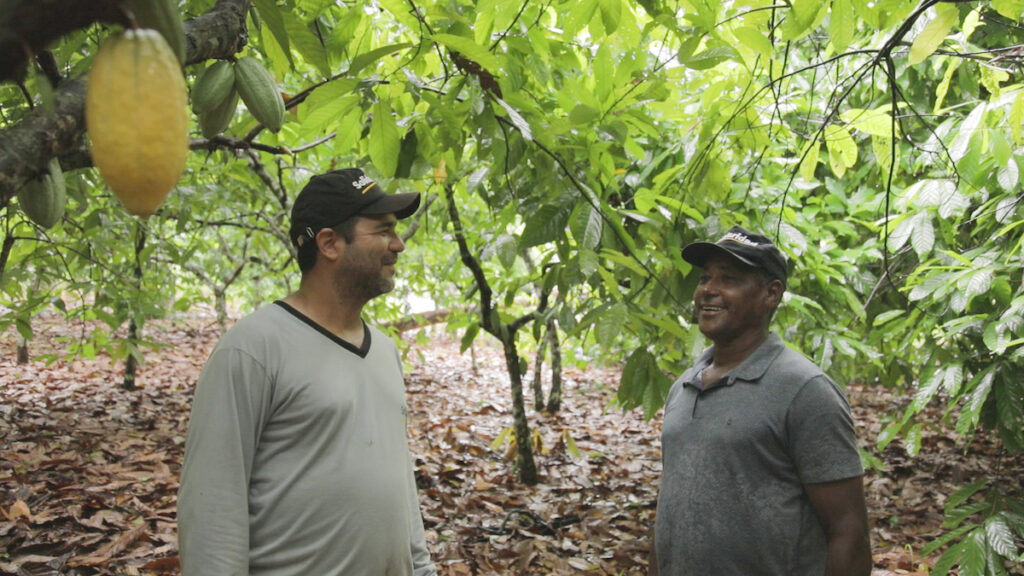
Scaling low-carbon agriculture in the Amazon
In Latin America and the Caribbean, 58 percent of GHG emissions come from land use, land use change, forestry, and agriculture. Depending on its use, land can be a source of GHG emissions or a net carbon sink. The Amazon rainforest, which spans nine South American countries, has historically been one of the world’s largest and most important stores of carbon. The Amazon also provides other services, such as biodiversity conservation and livelihood opportunities for communities. However, this essential ecosystem is threatened by high rates of deforestation – much of it driven by agricultural expansion.
Since 2022, Solidaridad has sought to scale LCA practices in the Amazon through Amazonia Connect, a partnership between the U.S. Agency for International Development, Earth Innovation Institute, the National Wildlife Federation, and the University of Wisconsin, Madison. Amazonia Connect aims to scale low emission commodity production and improve biodiversity conservation in high-biodiversity regions of the Amazon that house the supply sheds of international and domestic companies. Over five years, Amazonia Connect will work in coffee, palm oil and cattle and dairy value chains in Brazil, Colombia, and Peru.
Amazonia Connect promotes and scales the adoption of low-emission commodity production to improve biodiversity conservation and climate resilience in Brazil, Colombia, and Peru.
Through the program, farmers will learn essential practices to increase their yields and reduce their carbon footprint. For example, in Colombia, coffee farmers will learn how to integrate additional trees into their coffee production systems and maintain soil cover by adding cover crops or other plant material. In Brazil, farmers will learn sustainable pasture management practices, such as rotational grazing, and commit to not use fire for pasture management.
Low-carbon agriculture in other geographies
In Côte d’Ivoire, cocoa production has historically been a significant driver of deforestation. Farmers often viewed trees as detrimental to their farm productivity, preferring instead to grow cocoa under full sun. However, between 2018-2021, Solidaridad worked with 15 cocoa cooperatives to promote agroforestry through the Cocoa Rehabilitation and Intensification Program. Through the program, farmers received information on relevant climate change issues and training in agroforestry practices, including managing tree nurseries with rapid-growing species like Fraké and Acacia.
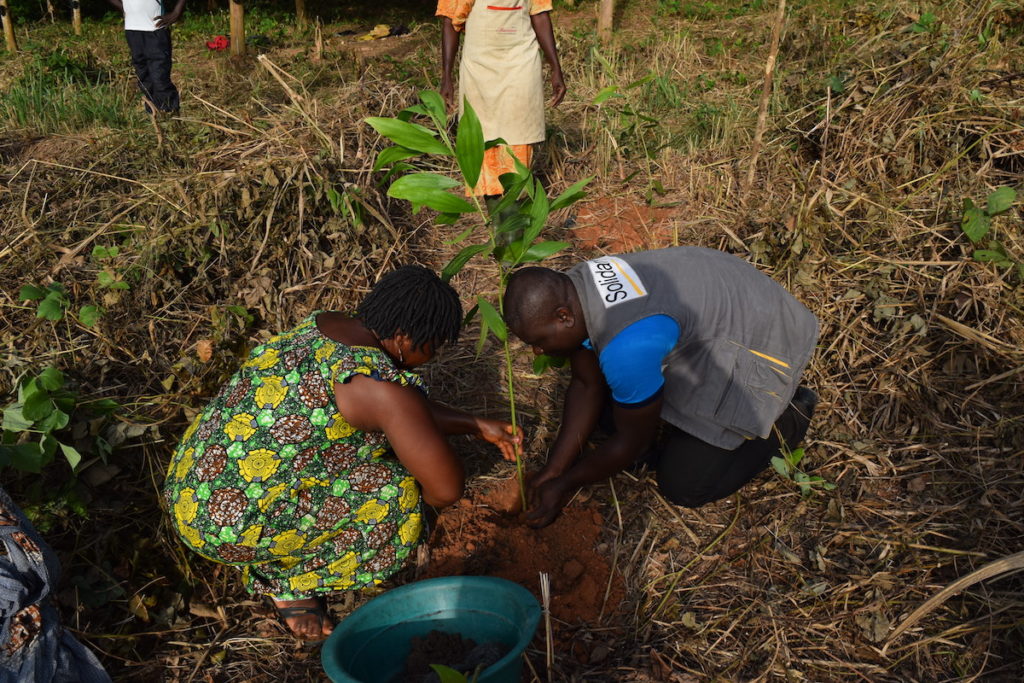
The program, which worked across Cote d’Ivoire, Ghana, Liberia, and Sierra Leone, enabled over 148,000 farmers to implement responsible production practices on their farms, with nearly 179,000 hectares of cocoa farms brought under sustainable production.
Brazil is responsible for 38 percent of the world’s soy production, an important income source for many farmers. However, soy production is also a significant source of GHG emissions. By adopting LCA practices, soy farmers in Brazil can play an important role in decreasing the country’s agriculture-driven emissions. Yet farmers are often hesitant to implement these practices unless they demonstrate long-term profitability. A 2022 study commissioned by Solidaridad provided important insights into how soy producers can maintain their incomes while reducing their environmental impact.
The future of low-carbon agriculture
Around the world, 2.6 billion people derive their livelihoods primarily from agriculture. As the effects of climate change grow more severe, many of these livelihoods are at risk. At the same time, the global population is expected to continue to increase, putting pressure on the world’s food systems.
Low-carbon agriculture offers an alternative where smallholder farmers can increase their resilience to climate threats, boost their productivity and incomes, and improve local and regional food security while reducing their carbon footprint.
Implementing low-carbon agriculture on a large scale will require the public and private sectors to work together to implement policies, incentives and the training needed to make this transition. Projects like Amazonia Connect exemplify how diverse stakeholders can collaborate to create a supportive environment for scaling low-carbon agriculture.

